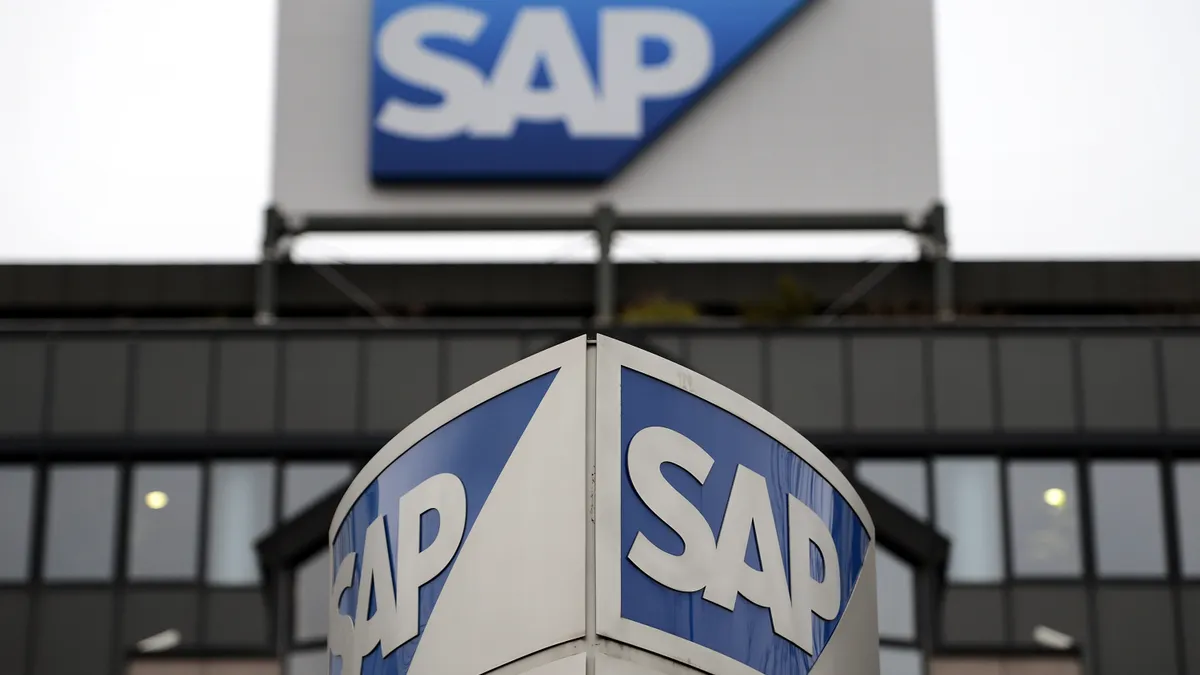Dive Brief:
- SAP added a new board unit, called Customer Service and Delivery, to accelerate cloud growth and adoption, the ERP behemoth announced Tuesday.
- Thomas Saueressig, the executive board member currently in charge of product engineering, will helm the new unit, which will convene on April 1. Saueressig served as CIO and global head of IT services at SAP prior to joining the board five years ago.
- Muhammad Alam, who joined the company last year as president and chief product officer for the Intelligent Spend and Business Network, will take Saueressig’s seat on the executive board in April. Alam is a Microsoft veteran who spent 17 years with the tech company, finishing his stint there as corporate VP of product and engineering for Microsoft Dynamics 365 business applications.
Dive Insight:
The announcement comes on the heels of the company raising software support fees by roughly 5% this month, and scaling back updates for on-prem deployments.
“Our new innovations will not be available for on-premises or hosted on-premise ERP customers on hyperscalers,” the company’s CEO Christian Klein said, during a July earnings call. “New ERP capabilities as well as sustainability and carbon accounting solutions, and all our new AI innovations, will only be available in the cloud.”
As enterprises prioritize cloud, vendors are realigning their business models, shifting from on-prem licenses to cloud-based delivery and usage-based pricing. For companies that have been slow to migrate and customers who are used to capital expenditures on software, the transition can be rocky.
A legacy on-prem ERP system may have technical drawbacks but it can seem affordable, Liz Herbert, Forrester VP and principal analyst, told CIO Dive.
“When you have an on-premises system, there's a big upfront cost and then that gets paid off,” Herbert said. “With SaaS, not only do you have recurring fees forever, but those fees tend to go up over time, anywhere from a few percentage points to 10% at each renewal.”
With key vendors like SAP committed to the shift, resisting the trend has become more difficult. But change isn’t always easy.
SaaS solutions generally aren’t as configurable as an on-prem ERP, according to Andy Sealock, senior partner, advisory and transformation at consulting firm West Monroe. Enterprises commonly have to realign business processes to accommodate the software, causing short-term headaches.
SAP hopes to ease that shift for customers through the latest addition to its board.
“The new board area will have a key focus on accelerating our customers’ ability to continuously adopt new cloud-based innovation, particularly ensuring they are running a ‘clean core’ in their ERP solution,” a company spokesperson told CIO Dive.
Herbert said it’s a smart move for the 51-year-old software giant.
“It’s good both in terms of the attention that it puts on a very real problem that we see with on-premises companies evolving to SaaS and the signal it sends to the market that SAP is serious about being a more modern company in terms of the way that they engage with their customers,” said Herbert.













